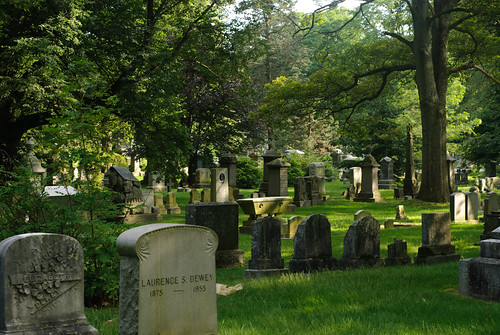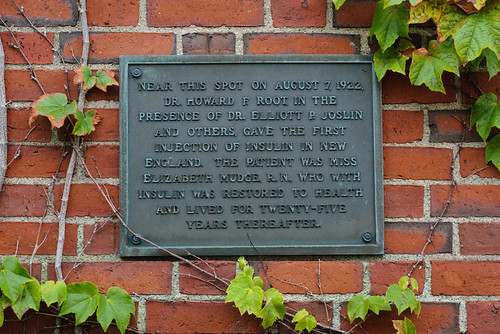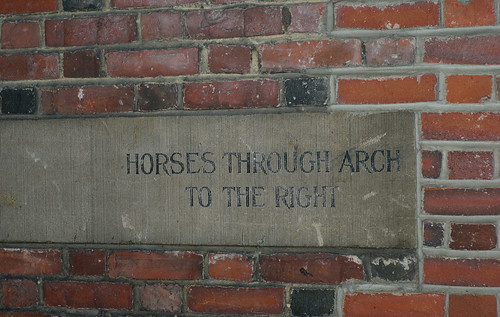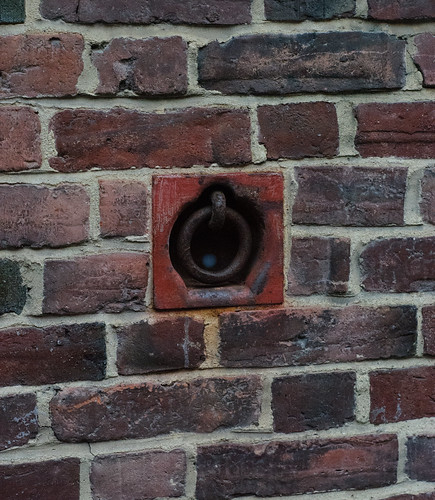Back in early July, Nick and I ventured out to the Forest Hills Cemetery.
It might not be the first garden cemetery in America like the Mount Auburn Cemetery is in Cambridge, nor can it compete with that cemetery for having more incredibly famous “residents”. Our visit to the cemetery was not unlike a visit to a museum. We wanted to see the works of art in landscape, architecture and sculpture.
Daniel Chester French was one of the main sculptors whose works I wanted to see. Luckily one of his masterpieces is located right next the main entrance to the cemetery.
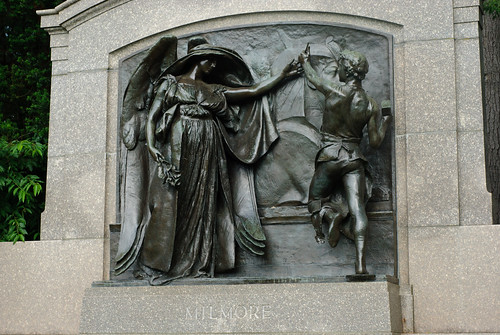 |
Death and the Sculptor by Daniel Chester French
a tribute to brothers Martin and Joseph Milmore |
Death and the Sculptor is French’s tribute to his fellow artists, Martin Milmore, a sculptor, and his brother Joseph Milmore, a stone cutter. Interestingly, the bas-relief depicts the sculptor chiseling a sphinx.
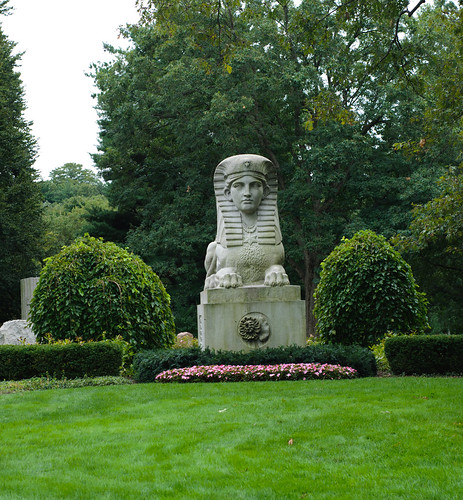 |
| Civil War Memorial, sculpted by Martin Milmore |
You may remember or know this unusual tribute to the Union and the American Civil War at the Mount Auburn Cemetery--this was the work of Martin and Joseph Milmore.
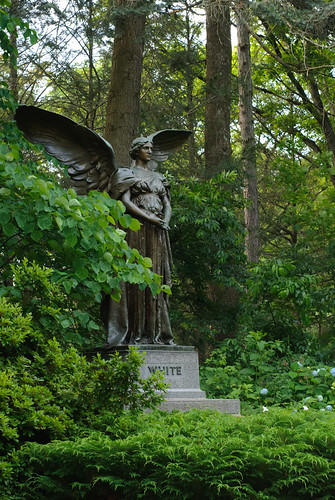 |
Angel of Peace by Daniel Chester French
a tribute to George Robert White |
Angel of Peace is another work by Daniel Chester French that we saw. This tall statue is a tribute to George Robert White, a businessman and a Boston philanthropist. His name did not mean anything to me until I started seriously studying my manual for the Longwood Medical Area tour. White donated money to the Massachusetts College of Pharmacy, and the college’s first building built in the Longwood Medical Area was named after him.
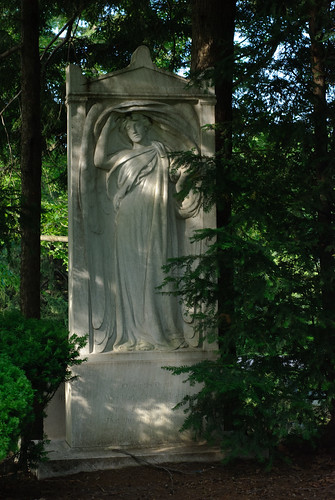 |
| The Slocum Memorial by Daniel Chester French |
The lesser known 1909
Slocum memorial by Daniel Chester French was difficult to find, but no less graceful and beautiful than the other sculptures.
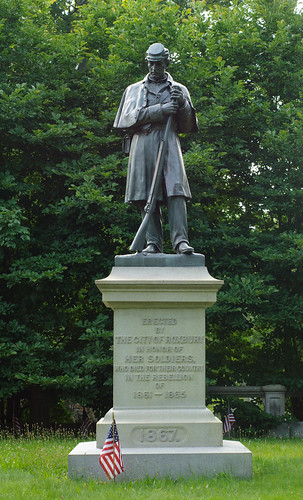 |
Citizen Soldier, also known as the Civil War Roxbury Soldiers' monument
by Daniel Chester French |
Besides going to see the memorial to Martin Milmore, we also visited his Roxbury Soldiers’ monument or the
Citizen Soldier. It is no wonder that this sculpture catapulted him into fame.
While enjoying the sculpture, we also visited graves of some notable people. Nick particularly wanted to pay his respects to William Lloyd Garrison.
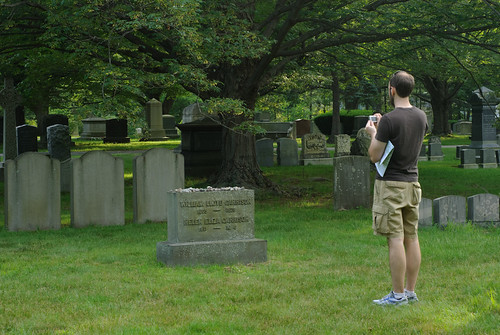 |
| Nick taking photos of the William Lloyd Garrison gravestone |
I am very glad to say that I have now been to the site where many of the Warrens are interred.
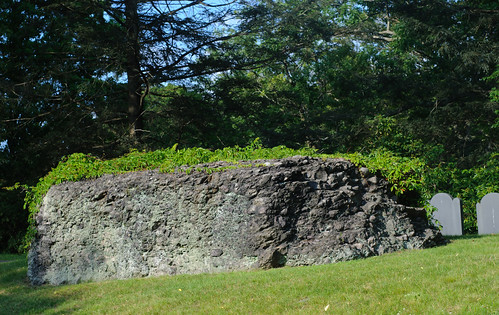 |
| a boulder of Roxbury pudding stone, marking the Warrens' burial site |
 |
One of the Warrens' headstone
This one lists Joseph Warren, John Warren and John Collins Warren |
The important ones for me are Joseph Warren, the physician/spymaster and Revolutionary War hero, his brother John Warren, who established the Harvard Medical School, and his son John Collins Warren, who was one of the founders of the Massachusetts General Hospital and the Boston Medical Library.
We also visited the graves of e.e. cummings and Eugene O’Neil.
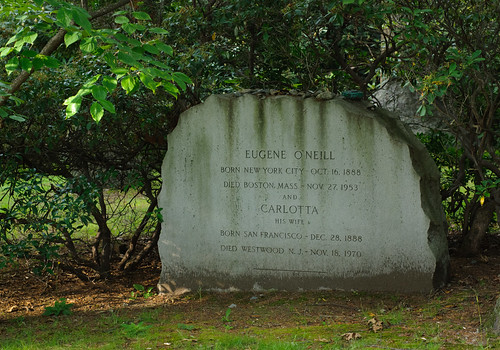 |
| Eugene O'Neil's headstone |
We had a hard time finding the latter, and while Nick was busy looking, I enjoyed taking photos of the statue of Saint Francis, known for his love of animals and founding of the Franciscan order.
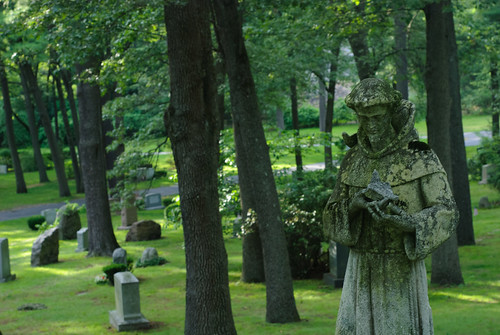 |
Saint Francis, known for his love of animals and founding of the Franciscan order,
watches over the area called Sleepy Hollow |
Our last stop before leaving the cemetery was the grave of Henry and Lucinda Barnard.
 |
| Sandstone sculpture of a Newfoundland dog, by Henry Dexter |
We actually do not know anything about the Barnards, but the grave is guarded by a beautiful sandstone sculpture of a Newfoundland dog, created by Henry Dexter in 1854. It is not clear to me whether the Barnards had a pet Newfoundland dog. It is more likely that the sculpture acts as a guardian for the grave.











